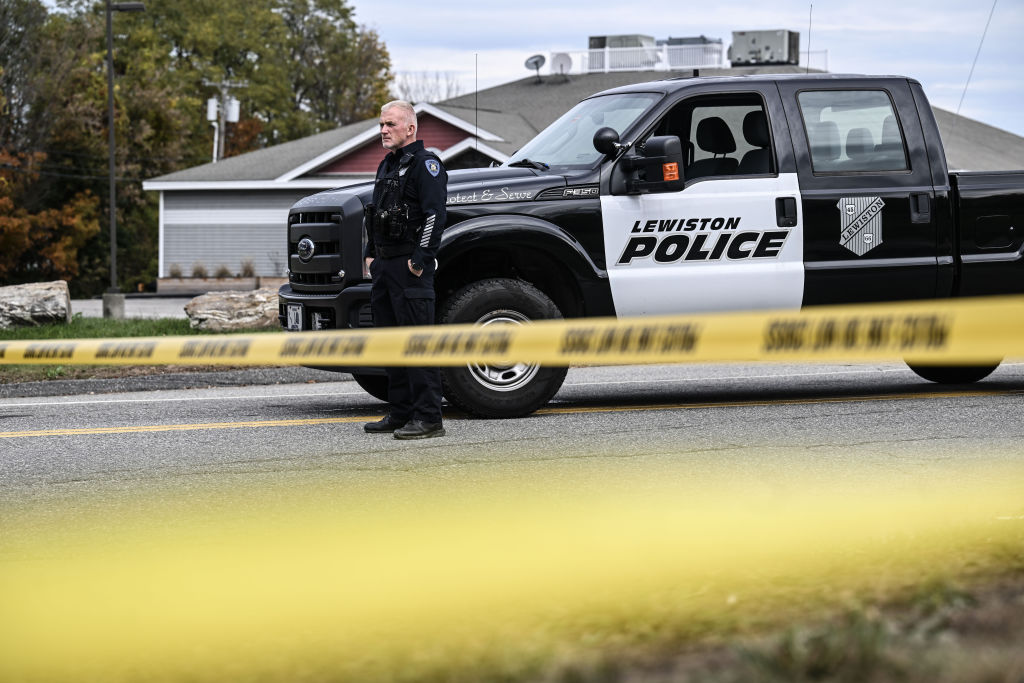A horrible massacre in Maine—who could have seen it coming?
Everybody.
The Army did. The Maine killer was a reservist whose behavior exhibited mental illness of a dangerous kind: He had assaulted friends and colleagues, gave voice to delusions of persecution, and had been remanded to a psychiatric hospital. The Army handed down its judgment, that he “should not have a weapon, handle ammunition, and not participate in live fire activity.” And then the Army washed its hands of the matter, save for being sure to point out that the killer did not have access to military-issued weapons at the time of his crime.
The police saw it coming. They had been informed by one of the killer’s military colleagues that he seemed ready to “snap and commit a mass shooting.” Note the specificity of the threat identified—not some vague notion that the reservist was a danger to himself and others, but that he was going to do exactly what he ended up doing. Police visited his home and spoke with his family. Do you know what the police did? They got his brother to promise to try to secure any firearms that the mass shooter might use to pull off the mass shooting everybody expected him to commit. This raises some obvious questions, such as: Why do we have police? No doubt the killer’s brother meant well, but he is not a sworn law-enforcement officer with a badge and a gun and the ability to go to a judge to get a warrant.
The killer’s family saw it coming, and not just the brother in question but also his son, his ex-wife, and others. They described their strategy as trying to avoid the man who seemed to practically everybody who knew him primed to do the awful thing he just did. And avoidance is a good strategy—for them. They decided that the best thing to do was to try to get the reservist’s military superiors involved. And, at one point, the brother apparently changed the combination to the gun safe in the man’s home but did not take away the guns—or the killer’s backup key, for that matter. He wasn’t the only one concerned about those guns: The killer’s divorce decree specifically noted that firearms in his home must be kept securely locked.
A local gun shop knew something was up. When the killer went to a retailer to pick up a suppressor he had ordered, he answered “Yes” to one of the disqualifying questions on the background check, affirming that he had “been adjudicated as a mental defective” or had “been committed to a mental institution.” That wasn’t actually true—the killer had been treated for two weeks in a psychiatric facility, but he had not been through the legal process of being involuntarily committed or being declared incompetent. But it amounted to a declaration—on federal paperwork—that the killer himself knew he was suffering from a profound mental disturbance. As required by law, the shop refused to execute the transfer. The law doesn’t require anything more of them, and, if it did, what were they going to do? Report the incident to the same police who ended up doing so little to stop the massacre? Call the Army? Track down his family? To what end?
The military. The police. The gun shop. His friends. His family. The psychiatric facility at which he was treated. People who knew him and cared about him—and people who feared him. Everybody knew. But, in the end, nobody actually did anything that stopped him from doing what they were all afraid he was going to do.
Some states have so-called red-flag laws; Maine has a more expansive “yellow flag” law, under which police can temporarily disarm someone on the recommendation of a doctor. But the Maine killer was not disarmed under that law, in spite of the fact that the Army wanted to make sure he didn’t have access to any of its weapons, that his family was worried about his mental state and his access to firearms, that the police were similarly worried—that the killer himself made a federally sworn declaration of his mental unfitness on that gun-shop paperwork.
This is an outrageously familiar story, of course. The killer in the Jacksonville massacre had been involuntarily held in a Florida psychiatric facility under the state’s “Baker Act,” after which nothing was done to stop him from doing what everybody expected him to do. The killer in the 2018 Parkland massacre had been the subject of an attempted Baker Act proceeding, and school counselors had recommended involuntary mental health treatment, but the medical professionals decided that the future killer presented “low risk of harming himself or others.” The Uvalde killer made violent threats and collected news stories about mass shootings. The killer in Roseburg, Oregon, engaged in violent fantasies and told his friends on 4Chan: “Don’t go to school tomorrow.”
These stories raise serious questions about the competence and commitment of our law enforcement and mental health authorities. Take one truly remarkable example: After being flagged for what police called “escalating homicidal behavior,” the future Club Q killer in Colorado had been involved in an armed standoff with SWAT units—a standoff involving guns and explosives and a promise to become the “next mass killer”—which resulted in: nothing. The charges related to the standoff were thrown out after a four-minute hearing in which prosecutors did not even attempt to advance the case. The lunatic threatening to become a mass killer went on to become a mass killer, murdering five and shooting 19 others at a gay bar in Colorado Springs.
Five dead. Four minutes to throw out the charges—keep that in mind.
For comparison, consider this: I own a firearm that I plan to put a shoulder stock on to make it easier to shoot accurately. It is a perfectly ordinary model of gun that you can buy, without any special fuss, at any of the better gun shops around the country. The shoulder stock is a perfectly ordinary piece of plastic that can legally be installed with no paperwork on some firearms but not on others. Putting the shoulder stock on the firearm requires turning two screws. But before I can legally turn those screws, I had to be fingerprinted and photographed and had to spend a couple of hours filling out federal paperwork identifying me as a firearms manufacturer, had to undergo an additional background check, etc.—and, if things move quickly, I may have Washington’s permission to turn those screws before the year is out, though it might go into 2024. You can, if you want, buy the same firearm with the stock already attached, but that requires a whole different federal process that would very likely extend into 2025.
Or, you could get into an armed standoff, profess your desire to carry out a massacre, and then be free to go and arm yourself and carry out that massacre after a four-minute hearing.
There is something perverse about how we approach firearms regulation. A regular guy with a clean criminal record may flunk his background check if he writes “101 Main Street” on his applications when it says “101 Main St.” on his driver’s license, or if one says “West Avenue” and the other says “West Ave.” Standoff with a SWAT team? Murderous threats? Eh, just watch the typos.
If anything is clear from the events preceding the bloodbath in Maine—in which everybody from the military to the police to friends and family and mental health authorities had good reason to intervene and the legal means to do so—it is that this is not, as our friends in the gun control movement insist, mainly a question of more robust retail regulation of sporting goods stores. The gun shop clerks in this story did what they were supposed to do: They declined to make a sale to someone they had reason to believe was a prohibited person. The police, on the other hand, basically punted public safety to the lunatic’s brother, asking him to lock up the guns and then more or less crossing their fingers and hoping for the best.
These episodes do not come out of nowhere. School shooters, in particular, are very eager to talk about their plans. A study undertaken by the Department of Education and the Secret Service found that in 81 percent of school shootings, at least one other person knew about the planned attack. Often, someone (usually another student) knew the day and time of the planned massacre. In a large majority of the cases, more than one person knew about the planned shooting. And that was a study carried out in 2004—a few years before smartphones and social media made young people a lot chattier and more public about almost everything, including violent intentions.
Sometimes, we get ahead of the curve: There’s a Jew-hating weirdo at Cornell who was recently taken into custody after a series of ghastly threats to do to Jewish students at Cornell what Hamas is doing to Israeli children, to “slit throats” and carry out a mass shooting at a dorm housing Jewish students. His parents say that he is suffering from mental illness, possibly suicidal … and, also, that he didn’t do it. It will be interesting to see how that turns out. But we should not assume that whatever happens to him will produce any legal barrier to his buying firearms or that, if he should end up being prohibited on criminal or mental health grounds, that anybody anywhere is going to lift a pinky finger to enforce the prohibition. There are plenty of red flags, but red-flag laws are not self-executing.
Who could see all this coming? Anybody who bothered to look.







Please note that we at The Dispatch hold ourselves, our work, and our commenters to a higher standard than other places on the internet. We welcome comments that foster genuine debate or discussion—including comments critical of us or our work—but responses that include ad hominem attacks on fellow Dispatch members or are intended to stoke fear and anger may be moderated.
With your membership, you only have the ability to comment on The Morning Dispatch articles. Consider upgrading to join the conversation everywhere.